Journal Description
Journal of Theoretical and Applied Electronic Commerce Research
Journal of Theoretical and Applied Electronic Commerce Research
is an international, peer-reviewed, open access journal of electronic commerce, published quarterly online by MDPI.
- Open Access— free for readers, with article processing charges (APC) paid by authors or their institutions.
- High Visibility: indexed within Scopus, SSCI (Web of Science), dblp, and other databases.
- Journal Rank: JCR - Q2 (Business) / CiteScore - Q1 (General Business, Management and Accounting )
- Rapid Publication: manuscripts are peer-reviewed and a first decision is provided to authors approximately 33.1 days after submission; acceptance to publication is undertaken in 4.9 days (median values for papers published in this journal in the first half of 2025).
- Recognition of Reviewers: APC discount vouchers, optional signed peer review, and reviewer names published annually in the journal.
Impact Factor:
4.6 (2024);
5-Year Impact Factor:
5.1 (2024)
Latest Articles
Turning Setbacks into Smiles: Exploring the Role of Self-Mocking Strategies in Consumers’ Recovery Satisfaction After E-Commerce Service Failures
J. Theor. Appl. Electron. Commer. Res. 2025, 20(3), 183; https://doi.org/10.3390/jtaer20030183 - 16 Jul 2025
Abstract
In today’s competitive environment of online service industries, particularly e-commerce, meeting consumer expectations is essential for service providers to ensure service quality. However, service failures are unavoidable, leading to unfavorable consequences for businesses. Understanding the mechanisms for customer recovery after negative service experiences
[...] Read more.
In today’s competitive environment of online service industries, particularly e-commerce, meeting consumer expectations is essential for service providers to ensure service quality. However, service failures are unavoidable, leading to unfavorable consequences for businesses. Understanding the mechanisms for customer recovery after negative service experiences is crucial. Using cognitive–emotional personality systems theory and benign violation theory, this study constructed a theoretical model. A total of 351 samples were collected through a situational simulation experiment for a linear regression analysis. A self-mocking response strategy positively influenced brand trust through perceived brand authenticity regarding the dimensions of credibility, integrity, and symbolism. Simultaneously, brand trust was identified as a key driver of post-recovery satisfaction. This study proposes a chain mediation model, which incorporates perceived authenticity and brand trust, to fully comprehend the mechanisms underlying consumers’ satisfaction after service recovery. Our findings provide empirical evidence for the effects of self-mockery on post-recovery satisfaction, as well as suggestions for marketers seeking efficient means to meet consumers’ emotional and cognitive demands during service recovery situations.
Full article
(This article belongs to the Special Issue Emerging Trends and Innovations in Electronic and Mobile Business: Navigating New Frontiers in E-commerce and Beyond)
►
Show Figures
Open AccessArticle
Analysis of Bullwhip Effect and Inventory Cost in an Omnichannel Supply Chain
by
Dandan Gao, Chenhui Liu and Xinye Sun
J. Theor. Appl. Electron. Commer. Res. 2025, 20(3), 182; https://doi.org/10.3390/jtaer20030182 - 15 Jul 2025
Abstract
►▼
Show Figures
This paper explores the optimization of the bullwhip effect (BWE) and inventory costs considering price information symmetry in an omnichannel environment, offering novel insights into managing supply chain dynamics. We examine the pick-up lead time in the “buy online and pick up in
[...] Read more.
This paper explores the optimization of the bullwhip effect (BWE) and inventory costs considering price information symmetry in an omnichannel environment, offering novel insights into managing supply chain dynamics. We examine the pick-up lead time in the “buy online and pick up in store” (BOPS) channel as a critical operational factor, analyzing how the interaction with the ordering lead time affects omnichannel supply chain performance. The research highlights the impacts of the BOPS strategy on demand and inventory information, developing a comparative examination of the BWE and inventory expenses within various supply chain contexts. We discover that the interplay between ordering lead time and pick-up lead time significantly affects both inventory costs and the BWE of omnichannel retailers, with these impacts presenting an inverse relationship. While numerous studies have validated that product returns can restrain the information distortion in supply chains, our findings reveal that this relationship holds true in omnichannel retail only within specific supply chain contexts. This comprehensive approach offers valuable insights for omnichannel supply chain managers seeking to optimize the BOPS strategy and improve overall operational efficiency.
Full article
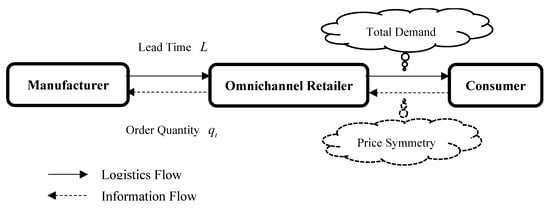
Figure 1
Open AccessArticle
The Role of Visual Cues in Online Reviews: How Image Complexity Shapes Review Helpfulness
by
Yongjie Chu, Xinru Liu and Cengceng Liu
J. Theor. Appl. Electron. Commer. Res. 2025, 20(3), 181; https://doi.org/10.3390/jtaer20030181 - 15 Jul 2025
Abstract
Online reviews play a critical role in shaping consumer decisions and providing valuable insights to enhance the products and services for businesses. As visual content becomes increasingly prevalent in reviews, it is essential to understand how image complexity influences review helpfulness. Despite the
[...] Read more.
Online reviews play a critical role in shaping consumer decisions and providing valuable insights to enhance the products and services for businesses. As visual content becomes increasingly prevalent in reviews, it is essential to understand how image complexity influences review helpfulness. Despite the growing importance of images, the impact of color diversity and texture homogeneity on review helpfulness remains underexplored. Grounded in Information Diagnosticity Theory and Dual Coding Theory, this study investigates the relationship between image complexity and review helpfulness, as well as the moderating role of review text readability. Using a large-scale dataset from the hotel and travel sectors, the findings reveal that color diversity has a positive effect on review helpfulness, while texture homogeneity follows an inverted U-shaped relationship with helpfulness. Furthermore, text readability strengthens the positive impact of texture homogeneity, making moderately homogeneous images more effective when paired with clear and well-structured text. Heterogeneity analysis demonstrates that these effects vary across product categories. The results advance the understanding of multimodal information processing in online reviews, providing actionable guidance for platforms and businesses to refine the review systems.
Full article
(This article belongs to the Section e-Commerce Analytics)
►▼
Show Figures

Figure 1
Open AccessArticle
The Impact of Digital Finance on the Development of Cross-Border E-Commerce
by
Fanyong Meng and Yuqing Xiao
J. Theor. Appl. Electron. Commer. Res. 2025, 20(3), 180; https://doi.org/10.3390/jtaer20030180 - 14 Jul 2025
Abstract
►▼
Show Figures
Digital finance, a financial innovation paradigm driven by the synergy of digital technology and data elements, has significant advantages in enhancing the convenience, accessibility, and security of cross-border transactions. This study empirically examines the impact of digital finance on the development of cross-border
[...] Read more.
Digital finance, a financial innovation paradigm driven by the synergy of digital technology and data elements, has significant advantages in enhancing the convenience, accessibility, and security of cross-border transactions. This study empirically examines the impact of digital finance on the development of cross-border e-commerce using provincial-level panel data from China between 2013 and 2023. After a series of robustness tests, the empirical results remained consistent and robust. The study found that digital finance significantly promotes the development of cross-border e-commerce. Further analysis indicated that digital finance enhances its supportive role in cross-border e-commerce by fostering the development of new, high-quality productive forces in the economy. The moderation effect analysis showed that internet penetration rates, innovation capital investment, and the development level of technology markets all have significant positive moderating effects on the role of digital finance in promoting cross-border e-commerce. The heterogeneity test results indicate that in regions with higher levels of marketization and a larger number of enterprises, the promotional effect of digital finance on cross-border e-commerce development is more pronounced.
Full article

Figure 1
Open AccessArticle
Trust, Privacy Fatigue, and the Informed Consent Dilemma in Mobile App Privacy Pop-Ups: A Grounded Theory Approach
by
Ming Chen and Meimei Chen
J. Theor. Appl. Electron. Commer. Res. 2025, 20(3), 179; https://doi.org/10.3390/jtaer20030179 - 14 Jul 2025
Abstract
As data becomes a core driver of modern business innovation, mobile applications increasingly collect and process users’ personal information, posing significant challenges to the effectiveness of informed consent and the legitimacy of user authorization. Existing research on privacy informed consent mechanisms has predominantly
[...] Read more.
As data becomes a core driver of modern business innovation, mobile applications increasingly collect and process users’ personal information, posing significant challenges to the effectiveness of informed consent and the legitimacy of user authorization. Existing research on privacy informed consent mechanisms has predominantly focused on privacy policy texts and normative legal discussions, often overlooking a critical touchpoint—the launch-time privacy pop-up window. Moreover, empirical investigations from the user’s perspective remain limited. To address these issues, this study employs a two-stage approach combining compliance audit and grounded theory. The preliminary audit of 21 mobile apps assesses the compliance of privacy pop-ups, and the formal study uses thematic analysis of interviews with 19 participants to construct a dual-path explanatory framework. Key findings reveal that: (1) while the reviewed apps partially safeguarded users’ right to be informed, compliance deficiencies still persist; (2) trust and privacy fatigue emerge as dual motivations driving user consent. Trust plays a critical role in amplifying the impact of positive messages within privacy pop-ups by enhancing the consistency among users’ cognition, affect, and behavior, thereby reducing resistance to privacy consent and improving the effectiveness of the current informed consent framework. Conversely, privacy fatigue increases the inconsistency among these factors, undermining consent effectiveness and exacerbating the challenges associated with informed consent. This study offers a user-centered framework to explain the dynamics of informed consent in mobile privacy pop-ups and provides actionable insights for regulators, developers, and privacy advocates seeking to enhance transparency and user autonomy.
Full article
(This article belongs to the Special Issue Electronic Commerce and Information Management Towards the Digital Era)
►▼
Show Figures

Figure 1
Open AccessFeature PaperArticle
Agency or Reselling? Multi-Product Sales Mode Selection on E-Commerce Platform
by
Pengju Huo, Yujie Wang and Qihuan Chu
J. Theor. Appl. Electron. Commer. Res. 2025, 20(3), 178; https://doi.org/10.3390/jtaer20030178 - 14 Jul 2025
Abstract
As environmental issues become increasingly prominent, the sustainable practices of enterprises, especially measures at the product level, have garnered widespread attention from scholars. Although numerous studies have explored suppliers’ sales strategies for green products, they often overlook the scenario where suppliers simultaneously sell
[...] Read more.
As environmental issues become increasingly prominent, the sustainable practices of enterprises, especially measures at the product level, have garnered widespread attention from scholars. Although numerous studies have explored suppliers’ sales strategies for green products, they often overlook the scenario where suppliers simultaneously sell both green and non-green products.This study focuses on the sales mode selection strategies of suppliers when providing green and non-green products through e-commerce platforms. Utilizing a game model, we analyze the equilibrium strategies between suppliers and e-commerce platforms, and conduct sensitivity analyses to evaluate the impact of key parameters on decision-making. The results reveal that there are significant differences in the strategic preferences of suppliers and e-commerce platforms. However, when commission rates are moderate and green products incur high production costs, these preferences tend to align, leading to Pareto optimal outcomes. Additionally, our findings demonstrate that adopting differentiated sales modes for the two product types can effectively mitigate the problem of double marginalization, thereby enhancing the efficiencyof supply chains. These insights provide valuable guidance for e-commerce platform managers and suppliers in making decisions on sales models for managing multiple types of products.
Full article
(This article belongs to the Collection Advances in Supply Chain Management in the Era of Electronic Commerce)
►▼
Show Figures

Figure 1
Open AccessArticle
Strategic Contract Format Choices Under Power Dynamics: A Game-Theoretic Analysis of Tripartite Platform Supply Chains
by
Yao Qiu, Xiaoming Wang, Yongkai Ma and Hongyi Li
J. Theor. Appl. Electron. Commer. Res. 2025, 20(3), 177; https://doi.org/10.3390/jtaer20030177 - 11 Jul 2025
Abstract
In the context of global e-commerce platform supply chains dominated by Alibaba and Amazon, power reconfiguration among tripartite stakeholders (platforms, manufacturers, and retailers) remains a critical yet underexplored issue in supply chain contract design. To analyze the strategic interactions between platforms, manufacturers, and
[...] Read more.
In the context of global e-commerce platform supply chains dominated by Alibaba and Amazon, power reconfiguration among tripartite stakeholders (platforms, manufacturers, and retailers) remains a critical yet underexplored issue in supply chain contract design. To analyze the strategic interactions between platforms, manufacturers, and retailers, as well as how platforms select the contract format within a tripartite supply chain, this study proposes a Stackelberg game-theoretic framework incorporating participation constraints to compare fixed-fee and revenue-sharing contracts. The results demonstrate that revenue-sharing contracts significantly enhance supply chain efficiency by aligning incentives across members, leading to improved pricing and sales outcomes. However, this coordination benefit comes with reduced platform dominance, as revenue-sharing inherently redistributes power toward upstream and downstream partners. The analysis reveals a nuanced contract selection framework: given the revenue sharing rate, as the additional value increases, the optimal contract shifts from the mode RR to the mode RF, and ultimately to the mode FF. Notably, manufacturers and retailers exhibit a consistent preference for revenue-sharing contracts due to their favorable profit alignment properties, regardless of the platform’s value proposition. These findings may contribute to platform operations theory by (1) proposing a dynamic participation framework for contract analysis, (2) exploring value-based thresholds for contract transitions, and (3) examining the power-balancing effects of alternative contract formats. This study offers actionable insights for platform operators seeking to balance control and cooperation in their supply chain relationships, while providing manufacturers and retailers with strategic guidance for contract negotiations in platform-mediated markets. These findings are especially relevant for large e-commerce platforms and their partners managing the complexities of contemporary digital supply chains.
Full article
(This article belongs to the Section e-Commerce Analytics)
►▼
Show Figures

Figure 1
Open AccessArticle
Trust and Ethical Influence in Organizational Nudging: Insights from Human Resource and Marketing Practice
by
Ioannis Zervas and Sotiria Triantari
J. Theor. Appl. Electron. Commer. Res. 2025, 20(3), 176; https://doi.org/10.3390/jtaer20030176 - 10 Jul 2025
Abstract
►▼
Show Figures
This study investigates how persuasion, trust, and empathy from Human Resources (HR) managers affect the acceptance of nudging practices in workplace, especially when these interventions are meant to be ethical and supportive. Based on the theory of advisory nudge, the research connects ideas
[...] Read more.
This study investigates how persuasion, trust, and empathy from Human Resources (HR) managers affect the acceptance of nudging practices in workplace, especially when these interventions are meant to be ethical and supportive. Based on the theory of advisory nudge, the research connects ideas from Human Resource Management and ethical marketing. A quantitative method was applied using a structured questionnaire answered by 733 HR professionals in European companies. The model was tested with PLS-SEM, and results confirmed strong influence of supervisor’s persuasion and empathy on HR professionals’ perception of nudges as ethical and autonomy-enhancing. The findings also showed that empathy plays important role in how HR professionals experience the intention behind soft interventions, with gender-based differences being significant. Additional analyses with IPMA and MGA confirmed the strategic importance of trust and emotional intelligence in organizational settings. The results help to understand when a persuasive act is seen as ethical guidance and when it is not, offering theoretical and practical insights both for HR leadership and marketing communication. The study suggests future research to explore different types of nudging and include variables such as organizational culture or HR professionals’ values, to better understand the ethical acceptance of influence at work.
Full article

Figure 1
Open AccessArticle
The Impact of Web-Based Augmented Reality on Continuance Intention: A Serial Mediation Roles of Cognitive and Affective Responses
by
Mary Y. William and Mohamed M. Fouad
J. Theor. Appl. Electron. Commer. Res. 2025, 20(3), 175; https://doi.org/10.3390/jtaer20030175 - 8 Jul 2025
Abstract
►▼
Show Figures
The aim of this study is to investigate how consumers’ cognitive and affective responses to web-based augmented reality affect their intention to continue to use augmented reality. The novelty of this study is the integration of the Stimulus–Organism–Response model with Technology Continuance Theory,
[...] Read more.
The aim of this study is to investigate how consumers’ cognitive and affective responses to web-based augmented reality affect their intention to continue to use augmented reality. The novelty of this study is the integration of the Stimulus–Organism–Response model with Technology Continuance Theory, allowing for an investigation of the relationships among the following critical variables: augmented reality (AR), utilitarian value, perceived risk, user satisfaction, attitude toward AR, and continuance intention. The study sample consisted of 452 participants. Data were analyzed using the Partial Least Squares–Structural Equation Modeling (PLS-SEM) approach. The results indicate significant direct relationships between all variables. Furthermore, this study demonstrated an indirect relationship between AR and continuance intention, mediated sequentially by cognitive responses, namely, utilitarian value and perceived risk, and affective responses, including user satisfaction and attitude toward AR. Consequently, it was revealed that all indirect relationships were significant, except for the pathways from AR to continuance intention involving perceived risk. This study presents key insights for online retailers, demonstrating how the integration of AR technology into conventional online shopping platforms can optimize user experiences by enhancing the cognitive and affective responses of customers. This, in turn, strengthens their intention to continue using AR technology, fostering sustained engagement and the long-term adoption of AR technology.
Full article

Figure 1
Open AccessArticle
Claiming Space: Domain Positioning and Market Recognition in Blockchain
by
Yu-Tong Liu and Eun-Jung Hyun
J. Theor. Appl. Electron. Commer. Res. 2025, 20(3), 174; https://doi.org/10.3390/jtaer20030174 - 8 Jul 2025
Abstract
►▼
Show Figures
Prior research has focused on the technical and institutional challenges of blockchain adoption. However, little is known about how blockchain ventures claim categorical space in the market and how such domain positioning influences their visibility and evaluation. This study investigates the relationship between
[...] Read more.
Prior research has focused on the technical and institutional challenges of blockchain adoption. However, little is known about how blockchain ventures claim categorical space in the market and how such domain positioning influences their visibility and evaluation. This study investigates the relationship between strategic domain positioning and market recognition among blockchain-based ventures, with a particular focus on applications relevant to e-commerce, such as non-fungible tokens (NFTs) and decentralized finance (DeFi). Drawing on research on categorization, legitimacy, and the technology lifecycle, we propose a domain lifecycle perspective that accounts for the evolving expectations and legitimacy criteria across blockchain domains. Using BERTopic, a transformer-based topic modeling method, we classify 9665 blockchain ventures based on their textual business descriptions. We then test the impact of domain positioning on market recognition—proxied by Crunchbase rank—while examining the moderating effects of external validation signals such as funding events, media attention, and organizational age. Our findings reveal that clear domain positioning significantly enhances market recognition, but the strength and direction of this effect vary by domain. Specifically, NFT ventures experience stronger recognition when young and less institutionally validated, suggesting a novelty premium, while DeFi ventures benefit more from conventional legitimacy signals. These results advance our understanding of how categorical dynamics operate in emerging digital ecosystems and offer practical insights for e-commerce platforms, investors, and entrepreneurs navigating blockchain-enabled innovation.
Full article
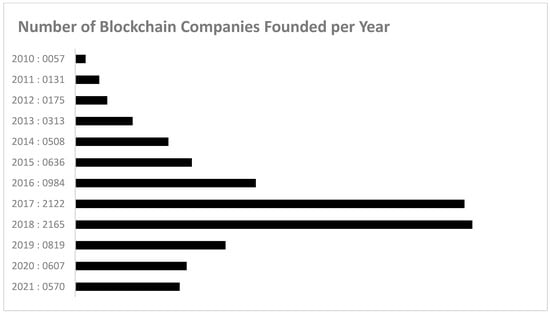
Figure A1
Open AccessArticle
Exploring the Mechanism of AI-Powered Virtual Idols’ Intelligence Level on Digital Natives’ Impulsive Buying Intention in E-Commerce Live Streaming: A Perspective of Psychological Distance
by
Honglei Li, Wenshu Li and Tianliang Ma
J. Theor. Appl. Electron. Commer. Res. 2025, 20(3), 173; https://doi.org/10.3390/jtaer20030173 - 7 Jul 2025
Abstract
With the rise of live-streaming services on e-commerce platforms, AI-powered virtual idols have demonstrated tremendous application potential and thus possess high commercial value. From the perspective of psychological distance, this study adopts the Stimulus–Organism–Response (S–O–R) theoretical framework to construct a research model of
[...] Read more.
With the rise of live-streaming services on e-commerce platforms, AI-powered virtual idols have demonstrated tremendous application potential and thus possess high commercial value. From the perspective of psychological distance, this study adopts the Stimulus–Organism–Response (S–O–R) theoretical framework to construct a research model of “AI-powered virtual idols–psychological distance–impulsive buying intention”. The model aims to explore how AI-powered virtual idols promote digital natives’ impulsive buying intention in the context of e-commerce live streaming. Furthermore, this study examines the moderating effect of technology readiness on the relationship between AI-powered virtual idols and psychological distance. The findings reveal that the level of intelligence of AI-powered virtual idols—including interactivity, anthropomorphism, homogeneity, and reputation—enhances digital natives’ impulsive buying intention by reducing psychological distance. For digital natives with lower technology readiness, the effect of AI-powered virtual idols in narrowing psychological distance is more pronounced. These findings enrich AI-driven consumer behavior models from a theoretical perspective and offer theoretical support and practical insights for developing AI-empowered digital marketing strategies tailored to the psychological traits and technological adaptability of digital natives.
Full article
(This article belongs to the Special Issue Human–Technology Synergies in AI-Driven E-Commerce Environments)
►▼
Show Figures

Figure 1
Open AccessArticle
Safe Haven for Bitcoin: Digital and Physical Gold or Currencies?
by
Halilibrahim Gökgöz, Aamir Aijaz Syed, Hind Alnafisah and Ahmed Jeribi
J. Theor. Appl. Electron. Commer. Res. 2025, 20(3), 171; https://doi.org/10.3390/jtaer20030171 - 5 Jul 2025
Abstract
The recent economic turmoil and the increasing volatility of bitcoins have necessitated the need for exploring safe-haven assets for bitcoins. In this quest, the present study aims to investigate the safe haven for bitcoins by examining the dynamic relationship between bitcoins, gold, foreign
[...] Read more.
The recent economic turmoil and the increasing volatility of bitcoins have necessitated the need for exploring safe-haven assets for bitcoins. In this quest, the present study aims to investigate the safe haven for bitcoins by examining the dynamic relationship between bitcoins, gold, foreign exchange, and stablecoins. This is achieved by calculating hedge ratios and portfolio weight ratios for various asset classes, by employing adaptive-based techniques such as generalized orthogonal generalized autoregressive conditional heteroscedasticity, corrected dynamic conditional correlation, corrected asymmetric dynamic conditional correlation, and asymmetric dynamic conditional correlation under various market and time-varying conditions. The empirical estimate reveals that all the selected asset classes are effective risk diversifiers for bitcoins. However, among all the asset classes, as per the hedge and portfolio weight ratio, Japanese yen, stablecoin for Japanese yen and Great Britain Pound, and Crypto Holding Frank Token (lowest-cost hedging strategies) are the most effective risk diversifiers when compared with bitcoins. Moreover, while considering external economic shocks, the empirical estimate posits that stablecoins are more stable risk diversifiers compared to the asset class they represent. Furthermore, in terms of the bivariate portfolio analysis formed with bitcoin, this study concludes that the weight of bitcoin is more stable when combined with gold, tether gold, Euro, Great Britain Pound, Swiss franc, and Japanese Yen. Thus, these assets are attractive for long-term investment strategies. This study provides investors and policymakers with significant insight into understanding safe-haven assets for bitcoin’s volatility and constructing a flexible portfolio that is dependent on the investment timeline and the prevailing market conditions.
Full article
(This article belongs to the Special Issue Blockchain Business Applications and the Metaverse)
►▼
Show Figures
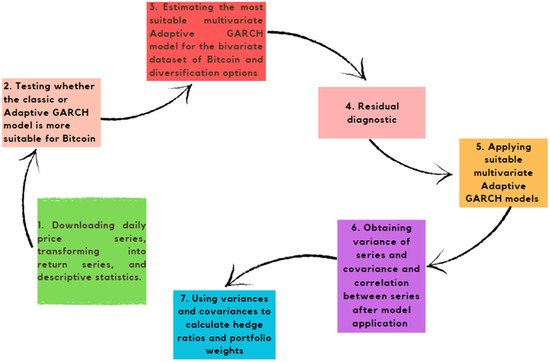
Figure 1
Open AccessArticle
“They Post, I Scroll, I Envy, I Buy”—How Social Media Influencers Shape Materialistic Values and Consumer Behavior Among Young Adults in Malaysia
by
Kaukab Abid Azhar, Che Aniza Che Wel and Siti Ngayesah Ab Hamid
J. Theor. Appl. Electron. Commer. Res. 2025, 20(3), 172; https://doi.org/10.3390/jtaer20030172 - 4 Jul 2025
Abstract
►▼
Show Figures
Social media influencers have made materialism more accessible and desirable, shaping how followers view success, self-worth, and consumption. This study investigates the influence of materialistic messages promoted by lifestyle influencers on their followers’ emotions, self-concept, and consumer behavior, using Symbolic Interactionism as the
[...] Read more.
Social media influencers have made materialism more accessible and desirable, shaping how followers view success, self-worth, and consumption. This study investigates the influence of materialistic messages promoted by lifestyle influencers on their followers’ emotions, self-concept, and consumer behavior, using Symbolic Interactionism as the theoretical framework. The research addresses three key questions: motivations for follower engagement, emotional effects of materialistic content, and how such messages appear to influence purchasing decisions. Using a qualitative approach, the study focuses on 15 Malaysian young adults who actively engage with lifestyle influencers. Data were analyzed using Braun and Clarke’s thematic analysis framework. Six key themes emerged: (1) admiration and aspiration; (2) feelings of inadequacy and envy; (3) rationalization of impulsive purchases; (4) symbolic consumption and self-identity; (5) emotional ambivalence; and (6) distancing and self-regulation. The findings suggest that influencers serve not only as marketing agents but as symbolic figures whose lifestyles become templates for success and self-worth. Participants engaged with this content in emotionally complex ways, simultaneously admiring and resisting the ideals presented. Their consumption behaviors appeared to be shaped by perceived social meanings attached to material goods. The study provides implications for media literacy programs, influencer marketing practices, and platform-level interventions that consider the emotional and identity-based dimensions of materialistic consumption.
Full article
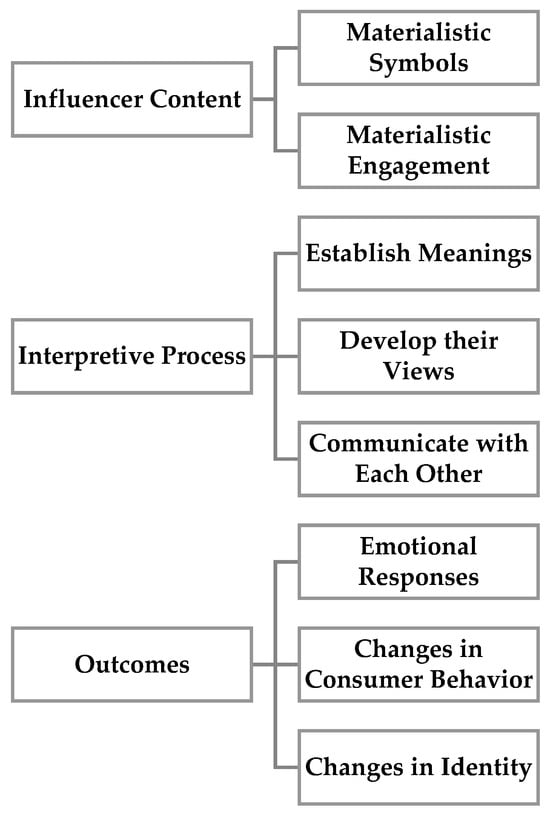
Figure 1
Open AccessArticle
Private Brand Product on Online Retailing Platforms: Pricing and Quality Management
by
Xinyu Wang, Luping Zhang, Yue Qin and Yinsu Wang
J. Theor. Appl. Electron. Commer. Res. 2025, 20(3), 170; https://doi.org/10.3390/jtaer20030170 - 4 Jul 2025
Abstract
►▼
Show Figures
In recent years, online retailing platforms (ORPs) have increasingly introduced private brand (PB) products as a new profit source, reshaping market dynamics and affecting their commission revenues. This shift creates a strategic trade-off for the platform: maximizing PB product profits while maintaining commission
[...] Read more.
In recent years, online retailing platforms (ORPs) have increasingly introduced private brand (PB) products as a new profit source, reshaping market dynamics and affecting their commission revenues. This shift creates a strategic trade-off for the platform: maximizing PB product profits while maintaining commission income from national brand (NB) retailers. This paper examines the platform’s pricing and quality strategies for PB products, as well as its incentives to introduce them. We develop a game-theoretic model featuring a platform and a retailer, and derive results through equilibrium analysis and comparative statics. Special attention is given to the platform’s strategy when market power is asymmetric and the PB product is homogeneous. The analysis yields three key findings. Firstly, the platform is always incentivized to introduce a PB product, regardless of its brand value. Even when direct profit is limited, the platform can leverage the PB product to increase competitive pressure on the retailer and boost commission revenue. Secondly, when the PB product has low brand value, the platform adopts a cost-saving strategy with low quality for extremely low brand value, and a function-enhancing strategy with high quality for moderately low brand value. Thirdly, when the PB product has high brand value, the platform consistently prefers a function-enhancing strategy. This study contributes to the literature by systematically characterizing the platform’s strategic trade-offs in introducing PB products, highlighting its varied pricing and quality strategies across categories, and revealing the critical role of brand value in supply chain competition.
Full article

Figure 1
Open AccessArticle
Identification and Evaluation of Key Risk Factors of Live Streaming e-Commerce Transactions Based on Social Network Analysis
by
Changlu Zhang, Yuchen Wang and Jian Zhang
J. Theor. Appl. Electron. Commer. Res. 2025, 20(3), 169; https://doi.org/10.3390/jtaer20030169 - 3 Jul 2025
Abstract
As an emerging e-commerce model, live streaming e-commerce integrates instant interaction, content marketing, and online sales to bring consumers a new shopping experience. However, there are many risks in the process of live e-commerce transactions. Identifying key risk factors and implementing targeted control
[...] Read more.
As an emerging e-commerce model, live streaming e-commerce integrates instant interaction, content marketing, and online sales to bring consumers a new shopping experience. However, there are many risks in the process of live e-commerce transactions. Identifying key risk factors and implementing targeted control measures are crucial for promoting the sustainable and healthy development of live streaming e-commerce. This paper firstly constructs a business model of live streaming e-commerce transactions according to the transaction scenario and summarizes 24 risk factors from the three dimensions of live streaming e-commerce platforms, merchants, and anchors based on relevant national standards and other relevant literature. Secondly, the Delphi method is employed to modify and optimize the initial risk factors. On this basis, the social network model of risk factors is constructed to determine the influence relationship among risk factors. By calculating the degree centrality, factor types are segmented, and key risk factors as well as influence paths are identified. Finally, corresponding countermeasures and suggestions are proposed. The results indicate that Credit Evaluation System Perfection, Service Evaluation System Perfection, Qualification Audit Mechanism Perfection, Dispute Complaint Handling Channels Perfection, Risk Identification Mechanism Perfection, Platform Qualification, Merchant Qualification, and Merchant Credit are the critical risk factors affecting live streaming e-commerce transactions.
Full article
(This article belongs to the Collection Utilizing Models for e-Business Decision-Making: From Data to Wisdom)
►▼
Show Figures
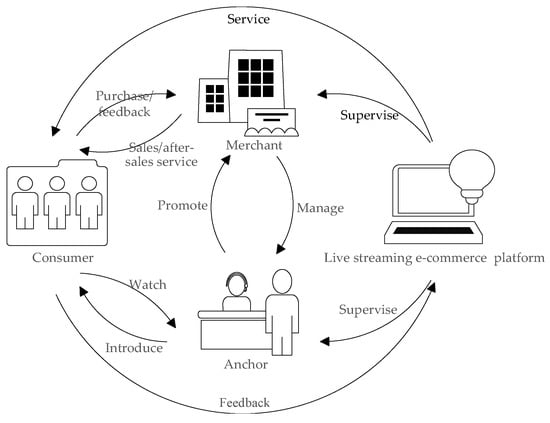
Figure 1
Open AccessArticle
Consumer Evaluation of Virtual vs. Human Influencers via Source Credibility, Perceived Social Similarity, and Consumption Motivation
by
Huai-Kuan Zeng and Carolyn A. Lin
J. Theor. Appl. Electron. Commer. Res. 2025, 20(3), 168; https://doi.org/10.3390/jtaer20030168 - 2 Jul 2025
Abstract
►▼
Show Figures
Influencer marketing is estimated to reach USD 32.55 billion by the year 2025. The extant research on virtual vs. human influencers’ effectiveness has reported mixed results. Currently, research has yet to explore how consumption motivation and influencer gender (virtual vs. human) may differentially
[...] Read more.
Influencer marketing is estimated to reach USD 32.55 billion by the year 2025. The extant research on virtual vs. human influencers’ effectiveness has reported mixed results. Currently, research has yet to explore how consumption motivation and influencer gender (virtual vs. human) may differentially impact consumer behavior. Likewise, whether antecedent factors such as prior attitudes toward the brand may affect the perceived authenticity and attractiveness of influencers has rarely been investigated. To fill this research gap, the current study examined virtual vs. human influencers’ effectiveness utilizing a 2 (influencer type) × 2 (product type) × 2 (influencer gender) between-subject online experiment. Specifically, Airbnb (a recreational product) and NJM (an insurance product) were respectively designated as a hedonic and utilitarian brand. The findings (N = 468) demonstrated that while prior brand attitudes toward a hedonic product had no effect on perceived influencer authenticity, the opposite was true for a utilitarian product. No significant difference was shown in perceived authenticity and attractiveness between a male and female (virtual or human) influencer. Structural equation modeling suggested that perceived social similarity between a participant and an influencer positively impacted the perceived attractiveness and authenticity of influencers and purchase intention. Hedonic instead of utilitarian motivation was found to be a positive predictor of purchase intention.
Full article
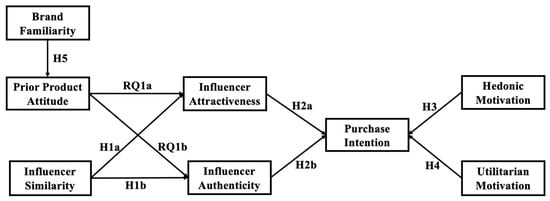
Figure 1
Open AccessArticle
What You See Isn’t Always What You Get: Investigating the Impact of the Information Disclosure Gap in Online Travel Agencies
by
Shu-Mei Tseng and Nairei Hori
J. Theor. Appl. Electron. Commer. Res. 2025, 20(3), 167; https://doi.org/10.3390/jtaer20030167 - 2 Jul 2025
Abstract
►▼
Show Figures
Online travel agencies (OTAs) function as e-commerce platforms that facilitate transactions between accommodation providers and consumers, enabling users to efficiently search for, compare, and book travel and lodging services. As the number of OTAs continues to grow, delivering superior service quality has become
[...] Read more.
Online travel agencies (OTAs) function as e-commerce platforms that facilitate transactions between accommodation providers and consumers, enabling users to efficiently search for, compare, and book travel and lodging services. As the number of OTAs continues to grow, delivering superior service quality has become essential for increasing customer repurchase intentions. Despite its significance, existing research has primarily focused on factors such as website quality, pricing strategies, brand image, and perceived value as determinants of repurchase intention. However, relatively little attention has been paid to the alignment between online information disclosure and customers’ actual offline experiences. To address this gap, the present study introduces the concept of the information disclosure gap and examines its effects on search cost, customer satisfaction, and trust, as well as the subsequent influence of these variables on repurchase intention. A questionnaire-based survey method was conducted with individuals in Taiwan who had prior experience using OTAs, yielding 365 valid responses. This study offers practical insights and recommendations for both OTAs and accommodation providers aimed at reducing the information disclosure gap and strengthening customer repurchase intention.
Full article
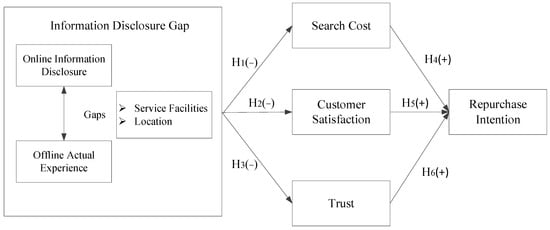
Figure 1
Open AccessArticle
Metaverse Characteristics: The Role of Consumer Experience Shaping Consumer Behavior in the Metaverse
by
Meng Tao, Jashim Khan, Ansar Abbass and Khalid Mehmood
J. Theor. Appl. Electron. Commer. Res. 2025, 20(3), 166; https://doi.org/10.3390/jtaer20030166 - 2 Jul 2025
Abstract
Understanding consumer behavior in digital environments is increasingly becoming crucial. This study investigates the influence of key metaverse characteristics—sociability, immersiveness, and environmental fidelity—on continuance intention to use the metaverse by examining the mediating role of consumer experience. In study 1, a Delphi method
[...] Read more.
Understanding consumer behavior in digital environments is increasingly becoming crucial. This study investigates the influence of key metaverse characteristics—sociability, immersiveness, and environmental fidelity—on continuance intention to use the metaverse by examining the mediating role of consumer experience. In study 1, a Delphi method involving 26 experts was employed to establish a consensus on the significance of metaverse characteristics in shaping consumer experience and behavior. In study 2, data from 391 metaverse users were collected via an online survey, and a two-step PLS-SEM approach was used to evaluate the hypothesized relationships. The Delphi study confirmed the theoretical relevance of the identified metaverse characteristics, which were subsequently validated through user data. The results show that consumer experience fully mediates the influence of immersiveness and environmental fidelity on continuance intention and partially mediates between sociability and continuance intention. Necessary Condition Analysis (NCA) further established consumer experience as a prerequisite for continued metaverse use, while importance performance analysis (IMPA) identified sociability as the most influential driver of continuance intention. This study advances our theoretical understanding of consumer behavior in virtual settings and offers practical insights for enhancing consumer engagement and continued metaverse use.
Full article
(This article belongs to the Special Issue Emerging Digital Technologies and Consumer Behavior)
►▼
Show Figures

Figure 1
Open AccessArticle
Immersive Storytelling Content and Innovation Resistance in Agritourism Marketing Context: Impact on Traveler Post-Experience Behavior
by
Achaporn Kwangsawad, Paingruthai Nusawat and Aungkana Jattamart
J. Theor. Appl. Electron. Commer. Res. 2025, 20(3), 165; https://doi.org/10.3390/jtaer20030165 - 1 Jul 2025
Abstract
►▼
Show Figures
Immersive technologies (IMTs) have significantly impacted the tourism sector by offering experiences that enhance engagement with destinations. Although previous research confirms that IMT affects travelers’ behavioral intentions, there is a lack of studies specifically focusing on the post-experience context of agritourism and the
[...] Read more.
Immersive technologies (IMTs) have significantly impacted the tourism sector by offering experiences that enhance engagement with destinations. Although previous research confirms that IMT affects travelers’ behavioral intentions, there is a lack of studies specifically focusing on the post-experience context of agritourism and the factors contributing to technological resistance. This study introduces a conceptual model that combines the Diffusion of Innovation framework, the technology acceptance model, and the psychological factors related to innovation resistance to examine the decision-making processes of IMT users in the post-experience context of agritourism. The research model is evaluated through partial least squares structural equation modeling (PLS-SEM) techniques involving 400 users who engaged with IMT for a duration not exceeding 3 months. The findings indicate that the amount of storytelling content, which enhances engagement in agritourism, significantly affects users’ perceptions of IMT and their intentions to revisit and continue using IMT. Additionally, factors related to compatibility, along with privacy and security risks, influence the reluctance or readiness to adopt IMT and the decision to revisit a destination. These findings contribute to the understanding necessary to develop content and apply IMT in the agritourism sector to promote long-term sustainability.
Full article

Figure 1
Open AccessArticle
The Effect of Digital Service Innovation on Strengthening Supply Chain Networks Against Disruptions: A Network Embedding Approach
by
Yanjie Gou, Maozeng Xu, Lucille Aba Abruquah and Xudong Li
J. Theor. Appl. Electron. Commer. Res. 2025, 20(3), 164; https://doi.org/10.3390/jtaer20030164 - 1 Jul 2025
Abstract
The advent of digital technology has transformed traditional service management approaches and offers new opportunities for the supply chain network to resist these interruptions. However, current research on how digital service innovation directly affects supply chain resilience is limited. This study constructs a
[...] Read more.
The advent of digital technology has transformed traditional service management approaches and offers new opportunities for the supply chain network to resist these interruptions. However, current research on how digital service innovation directly affects supply chain resilience is limited. This study constructs a theoretical research framework to explore how digital service innovation promotes supply chain resilience in the manufacturing industry, using a network embeddedness perspective. Through extensive survey data, the research demonstrates that digital service innovation enhances resilience by fostering two types of network embeddedness, namely relational and structural embedding, which in turn enhances resistance to interruption. IT support capabilities further reinforce the relationship between digital service innovation and relational embedding and structural embedding, and enhance the overall impact on resilience. This paper is among the first to integrate digital service innovation into supply chain resilience research, unveiling a network embedding approach for enhancing the ability to respond to supply chain network disruptions.
Full article
(This article belongs to the Special Issue Digitalization and Sustainable Supply Chain)
►▼
Show Figures
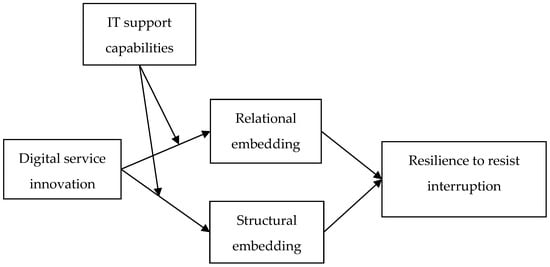
Figure 1

Journal Menu
► ▼ Journal MenuJournal Browser
► ▼ Journal Browser-
arrow_forward_ios
Forthcoming issue
arrow_forward_ios Current issue - Volumes not published by MDPI
Highly Accessed Articles
Latest Books
E-Mail Alert
News
Topics
Topic in
Businesses, Sustainability, JTAER
Digital Marketing Dynamics: From Browsing to Buying
Topic Editors: José Luís Mendes Loureiro Abrantes, Natália de Lima Figueiredo, Bruno Morgado Ferreira, Luís F. MartinezDeadline: 15 September 2025
Topic in
AI, BDCC, FinTech, IJFS, JTAER, Risks
Artificial Intelligence Applications in Financial Technology, 2nd Edition
Topic Editors: Albert Y.S. Lam, Andy ChunDeadline: 31 December 2025
Topic in
AI, Applied Sciences, Systems, JTAER, Healthcare
Data Science and Intelligent Management
Topic Editors: Dongxiao Gu, Jiantong Zhang, Jia LiDeadline: 30 April 2026
Topic in
Administrative Sciences, Businesses, Informatics, JTAER
Innovations in New Media: Shaping the Future of Interactive Marketing
Topic Editors: Chenglu Wang, Hongfei Liu, Morgan Yang, Qing Ye, Yunjia ChiDeadline: 30 September 2026

Conferences
Special Issues
Special Issue in
JTAER
Digitalization and Sustainable Supply Chain
Guest Editors: Qiang Lu, Tiantong XuDeadline: 31 August 2025
Special Issue in
JTAER
AI-Based Disruption, Innovations, and New Business Models in E-Commerce: Empirical Research, Case Studies and Current Trends
Guest Editors: Stephan Böhm, Sid Suntrayuth, Müge Klein, Ela Sibel Bayrak MeydanoğluDeadline: 1 December 2025
Special Issue in
JTAER
Blockchain Business Applications and the Metaverse
Guest Editor: Rand LowDeadline: 20 December 2025
Special Issue in
JTAER
Emerging Technologies and Marketing Innovation
Guest Editors: Hong Zhao, Zongshui WangDeadline: 28 February 2026
Topical Collections
Topical Collection in
JTAER
The New Era of Digital Marketing
Collection Editors: Shib Sankar Sana, Sweety Sadhukhan
Topical Collection in
JTAER
Customer Relationships in Electronic Commerce
Collection Editor: Yung-Shen Yen
Topical Collection in
JTAER
The Connected Consumer
Collection Editors: Inma Rodríguez-Ardura, Gisela Ammetller
Topical Collection in
JTAER
Emerging Topics in Omni-Channel Operations
Collection Editors: Gang Li, T. C. Edwin Cheng, Tao Zhang





